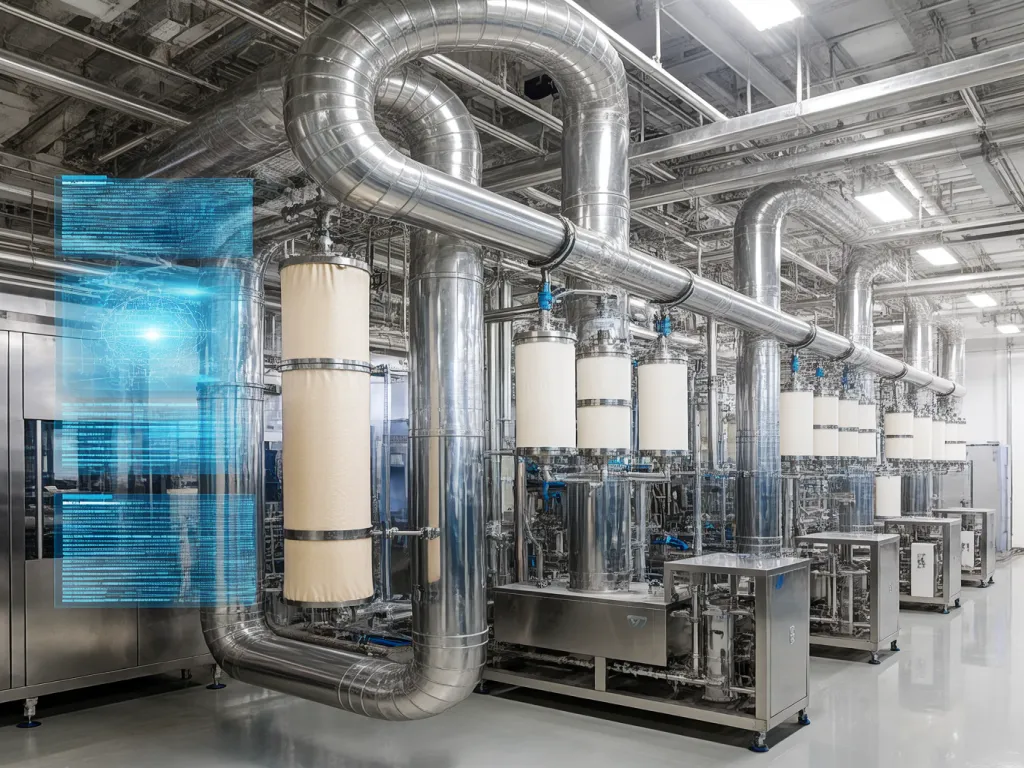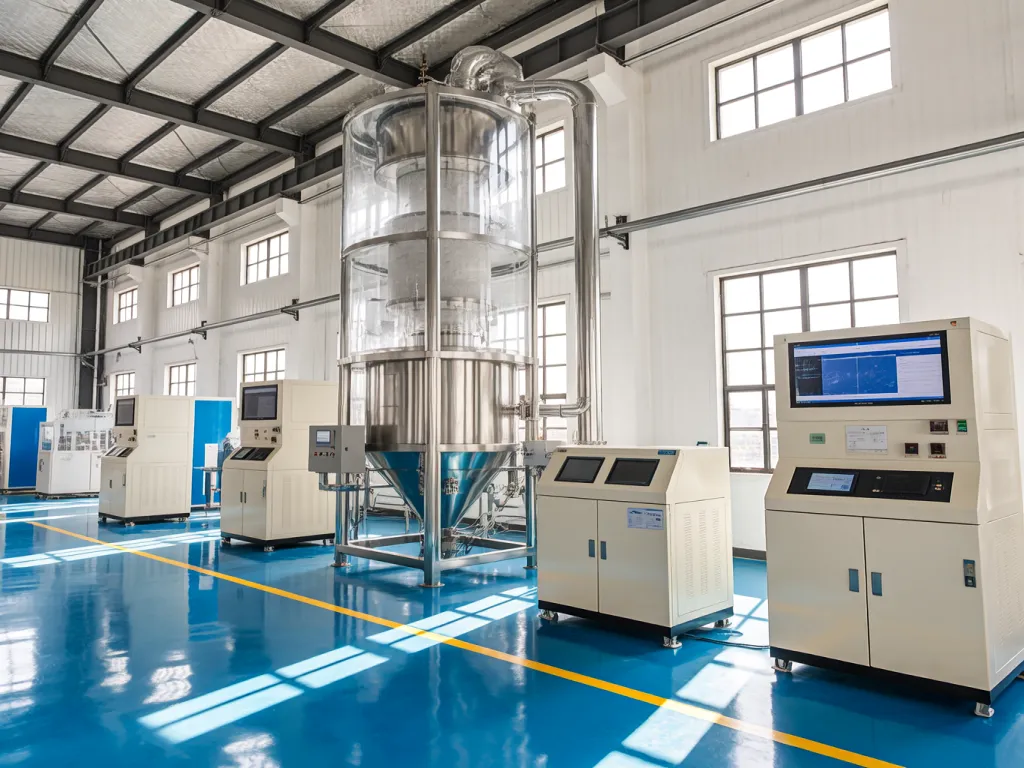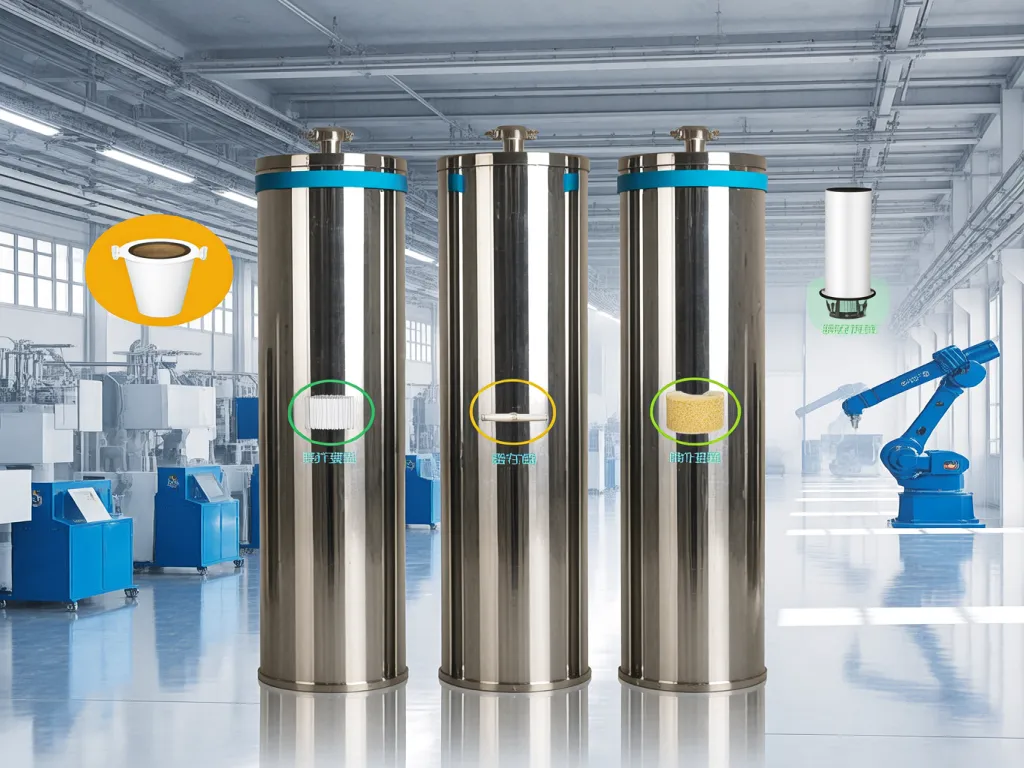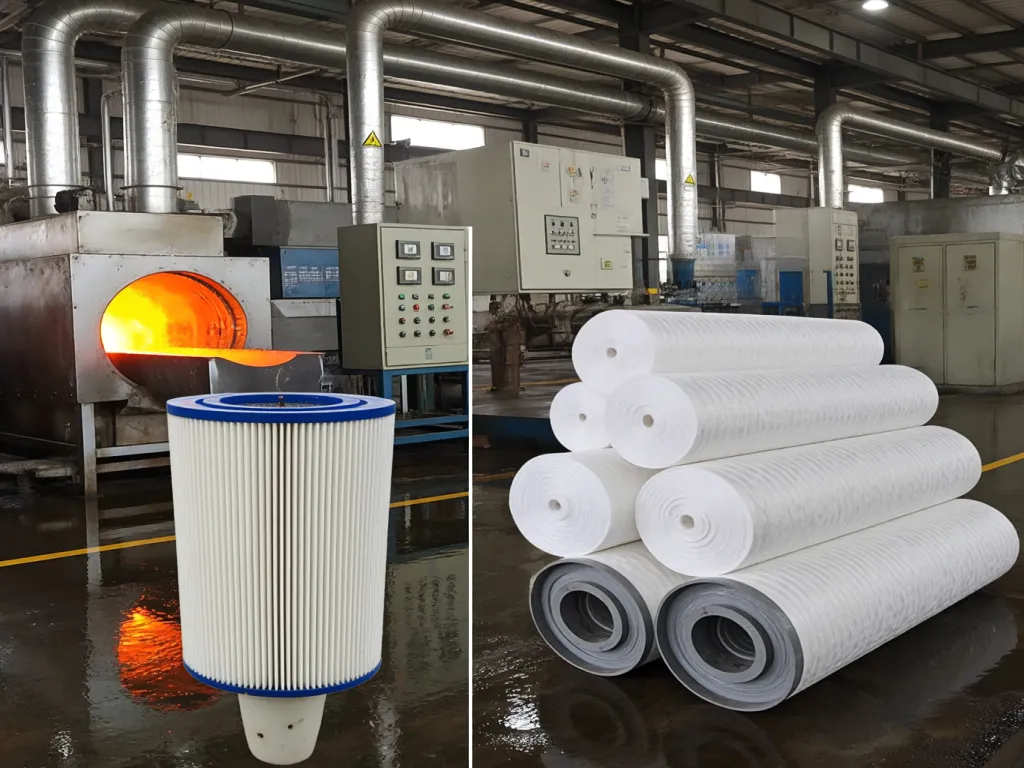Master High Efficiency Industrial Filter Bag Selection

When it comes to industrial operations, the efficiency of your filtration system can make or break productivity. Enter the world of high efficiency industrial filter bags—a cornerstone for any business seeking precision in dust collection, fluid purification, or gas cleaning. But how do you navigate the complex landscape of filtration efficiency metrics and material selection? This guide is your compass, steering you toward the perfect filter bag tailored to your industrial needs. Ready to transform your filtration process?

Decoding Filtration Efficiency Metrics: Precision, Capture Efficiency, and Beyond
When it comes to selecting a high efficiency industrial filter bag, understanding the core metrics of filtration efficiency isn’t just about ticking boxes—it’s about ensuring your industrial processes run smoothly, cost-effectively, and with minimal downtime. Let’s dive into the nitty-gritty of what makes these metrics so crucial, and how they translate into real-world performance. First off, filtration precision is your first line of defense. Imagine trying to catch fine dust particles with a net that has holes the size of basketballs—not very effective, right? Filtration precision refers to the smallest particle size that a filter bag can effectively capture. For industries dealing with ultra-fine particulates, like pharmaceuticals or semiconductor manufacturing, a high precision filter bag is non-negotiable. It ensures that even the tiniest contaminants are trapped, preventing product contamination and equipment wear. But precision alone doesn’t tell the whole story. Enter capture efficiency, the metric that measures how well a filter bag retains the particles it’s supposed to catch. Think of it as the ‘stickiness’ factor of your filter. A filter bag with high capture efficiency means fewer particles escape back into the environment or your process stream, maintaining air quality and product purity. This is particularly vital in food processing or chemical industries, where even trace amounts of impurities can lead to significant quality issues or regulatory non-compliance. Now, you might be wondering, ‘How do I know which precision and capture efficiency levels I need?’ Well, it boils down to your specific industrial application. For instance, in cement plants, where the primary concern is large dust particles, a moderate precision filter with high durability might suffice. Conversely, in a cleanroom environment for electronics assembly, you’d need a filter bag with ultra-high precision and exceptional capture efficiency to maintain the sterile conditions required. But wait, there’s more to it than just these two metrics. Flow resistance, or pressure drop, is another critical factor. As air or liquid passes through the filter bag, it encounters resistance, which can increase over time as the filter collects more particles. A filter bag with low initial pressure drop and slow rate of increase ensures your systems operate efficiently without unnecessary energy consumption. This is especially important in energy-intensive industries like power generation, where every bit of efficiency counts. Moreover, don’t overlook the importance of filter bag lifespan. A high efficiency industrial filter bag that needs frequent replacement isn’t truly efficient, is it? Look for materials and constructions that offer a balance between filtration performance and durability. Some advanced filter bags incorporate self-cleaning mechanisms or are treated to resist chemical degradation, extending their service life and reducing maintenance costs. So, how do you translate all these metrics into a practical selection process? Start by assessing your industrial environment’s specific needs. Consider the type and size of particulates you’re dealing with, the required air or liquid quality, and any regulatory standards you must adhere to. Then, match these requirements against the filtration efficiency metrics of potential filter bags. Remember, the goal is to find a filter bag that not only meets but exceeds your expectations in terms of performance, durability, and cost-effectiveness. By now, you might be thinking, ‘This sounds complex. Do I really need to understand all these metrics?’ The answer is a resounding yes. Because when you choose a high efficiency industrial filter bag based on a thorough understanding of filtration efficiency metrics, you’re not just buying a product—you’re investing in the reliability, efficiency, and longevity of your industrial processes.
Filtration Precision: The Fine Line Between Success and Failure
Filtration precision is more than just a number—it’s the difference between a product that meets quality standards and one that doesn’t. In industries where even microscopic impurities can cause significant problems, like in the production of medical devices or high-purity chemicals, a filter bag with high filtration precision is indispensable. It ensures that only the cleanest air or liquid passes through, protecting both your products and your equipment from damage.
Capture Efficiency: The Unsung Hero of Filtration
While filtration precision gets a lot of attention, capture efficiency is equally important. It’s the metric that tells you how effectively a filter bag retains the particles it captures. A filter bag with high capture efficiency means fewer particles are released back into the environment, reducing the risk of contamination and improving overall process efficiency. This is particularly crucial in industries with strict environmental regulations, like waste management or automotive painting, where any release of pollutants can lead to hefty fines and reputational damage. For a deeper understanding of how capture efficiency impacts compliance, refer to this EPA guide on air emissions.
Beyond the Basics: Flow Resistance and Lifespan
Flow resistance, or pressure drop, is often overlooked but plays a significant role in the overall efficiency of your filtration system. A filter bag with low initial pressure drop and a slow rate of increase ensures that your systems operate at peak efficiency, reducing energy consumption and costs. Additionally, considering the lifespan of a filter bag is essential. A durable filter bag that lasts longer reduces maintenance frequency and costs, making it a more cost-effective choice in the long run.

Material Impact on High Efficiency Industrial Filter Bag Performance
When it comes to choosing the right high efficiency industrial filter bag, material selection isn’t just about durability—it’s the heart of filtration performance. Different materials bring unique properties to the table, influencing everything from filtration efficiency to cost-effectiveness. Let’s break down how polyester, polypropylene, and fiberglass stack up against each other, so you can make an informed decision for your industrial needs. For those seeking tailored solutions, exploring options like high-efficiency industrial filter bags for dust collection can provide insights into specialized designs.
Polyester Filter Bags: Strengths and Weaknesses
Polyester filter bags are a top choice for many industries due to their balance of performance and affordability. Their smooth surface minimizes particle buildup, allowing for efficient cleaning during backflushing. This material also resists abrasion and most chemicals, making it durable in harsh environments. However, polyester’s hydrophobic nature can be a drawback in high-humidity settings, as moisture can cause clogging and reduce airflow. If your operation involves dry particles and moderate temperatures, polyester is a reliable option. For customizable solutions, consider durable custom industrial filter bags for dust collection.
Polypropylene Filter Bags: When to Use Them
Polypropylene filter bags excel in moist or wet conditions because they repel water and resist clogging. They’re also cost-effective, making them attractive for budget-conscious projects. On the flip side, polypropylene has a lower melting point, limiting its use in high-temperature applications. It’s also less durable than polyester, degrading faster under UV light. If your operation deals with liquid aerosols or operates in cool to moderate temperatures, polypropylene offers great value. For a solution that balances efficiency and cost, explore high-efficiency industrial filter bags for dust and liquid filtration.
Fiberglass Filter Bags: High-Temperature Performance
Fiberglass filter bags are the go-to for extreme heat environments. They can handle continuous temperatures up to 500°F and short bursts even higher, making them ideal for incinerators, power plants, and asphalt facilities. Their fine fibers capture tiny particles effectively, but they’re brittle and require careful handling. Fiberglass dust poses health risks, so proper safety measures are essential. If your operation runs at high temperatures and you need precise filtration, fiberglass is worth the extra effort. For a robust solution in high-temperature settings, consider high-efficiency durable industrial filter bags for dust collection.

Real-World Applications: Choosing the Right high efficiency industrial filter bag Material for Your Industrial Environment
When it comes to selecting the perfect high efficiency industrial filter bag, understanding the nuances of your industrial environment is crucial. After all, the right material can mean the difference between optimal performance and premature failure. Let’s dive into some real-world scenarios to see how temperature, humidity, and corrosion resistance play pivotal roles in material selection.
Imagine you’re running a chemical processing plant where temperatures often soar above 200°C. In such a high-heat environment, traditional materials like polyester or polypropylene might not hold up. Instead, you’d want to consider glass fiber filter bags. Glass fiber is renowned for its exceptional thermal stability, capable of withstanding extreme temperatures without losing structural integrity. This makes it an ideal choice for industries like steel manufacturing or cement production, where high temperatures are a constant. For a durable and high-efficiency solution, consider exploring our high-efficiency industrial filter bag designed specifically for such demanding environments.
Now, let’s shift gears to a more humid setting—say, a food processing facility where moisture levels are consistently high. Here, the risk of microbial growth and material degradation due to moisture absorption becomes a significant concern. Polyester, with its inherent moisture resistance and low water absorption rate, emerges as a strong contender. Polyester filter bags not only resist moisture but also maintain their shape and filtration efficiency, ensuring consistent performance even in damp conditions.
But what if your industrial environment is both hot and humid? Enter PTFE (Polytetrafluoroethylene) filter bags. PTFE is a marvel of modern materials science, offering unparalleled resistance to both high temperatures and chemical corrosion. It’s virtually impervious to moisture, making it perfect for applications like pharmaceutical manufacturing or waste incineration, where both heat and humidity are prevalent, and the risk of chemical exposure is high.
Corrosion resistance is another critical factor to consider. In industries like mining or wastewater treatment, where corrosive gases and liquids are commonplace, selecting a filter bag material that can withstand such harsh conditions is paramount. Nomex, an aramid fiber, shines in this regard. Its inherent chemical resistance and ability to maintain strength in corrosive environments make it a top choice for these demanding applications.
Let’s look at a practical example. A coal-fired power plant was facing frequent filter bag failures due to the corrosive nature of the flue gas. After analyzing the environment, they switched to Nomex filter bags. The result? A significant reduction in filter bag replacements, lower maintenance costs, and improved overall plant efficiency. This case study underscores the importance of material selection tailored to the specific industrial environment.
So, how do you ensure you’re making the right choice? Start by conducting a thorough assessment of your industrial environment. Identify the temperature ranges, humidity levels, and potential chemical exposures. Then, consult with a reputable filter bag supplier who can guide you through the material selection process based on your specific needs.
Remember, the goal is to achieve the best filtration efficiency while minimizing operational costs. By selecting the right high efficiency industrial filter bag material for your environment, you’re not just investing in a product; you’re investing in the longevity and efficiency of your industrial operations.
High-Temperature Environments: Glass Fiber’s Time to Shine
In high-temperature settings, glass fiber filter bags are the go-to choice. Their ability to withstand extreme heat without compromising filtration efficiency makes them indispensable in industries like steel manufacturing, cement production, and even aerospace. The key here is understanding that not all materials are created equal when it comes to thermal stability. Glass fiber’s unique composition allows it to maintain its structural integrity even at temperatures that would cause other materials to degrade rapidly. For a durable and custom solution tailored to high-temperature environments, explore our industrial filter bag.
Humid Conditions: Polyester’s Moisture-Resistant Edge
For industries operating in humid environments, polyester filter bags offer a compelling solution. Their low water absorption rate and inherent moisture resistance ensure that filtration efficiency remains high, even in damp conditions. This is particularly important in food processing, where moisture can lead to microbial growth and material degradation. Polyester’s ability to resist moisture while maintaining its shape and filtration properties makes it a top choice for these applications.
Corrosive Environments: Nomex’s Chemical Resistance
When it comes to corrosive environments, Nomex filter bags stand out for their exceptional chemical resistance. Industries like mining, wastewater treatment, and chemical processing often deal with corrosive gases and liquids that can quickly degrade less resistant materials. Nomex’s aramid fiber composition provides it with the strength and durability needed to withstand such harsh conditions, ensuring long-lasting performance and reduced maintenance costs. For a high-efficiency solution suitable for both dust collection and liquid filtration in corrosive environments, consider our high-efficiency industrial filter bag.
Selecting the right high efficiency industrial filter bag isn’t just about ticking boxes—it’s about aligning performance with your unique industrial demands. By understanding filtration efficiency metrics and material properties, you’re now equipped to make informed decisions that elevate your operations. Whether it’s polyester’s durability, polypropylene’s chemical resistance, or glass fiber’s high-temperature tolerance, the perfect match awaits. Don’t let subpar filtration drag you down. Take action now—explore our range, consult our experts, and equip your industrial setup with the filter bag it deserves. The next level of efficiency is just a choice away.

